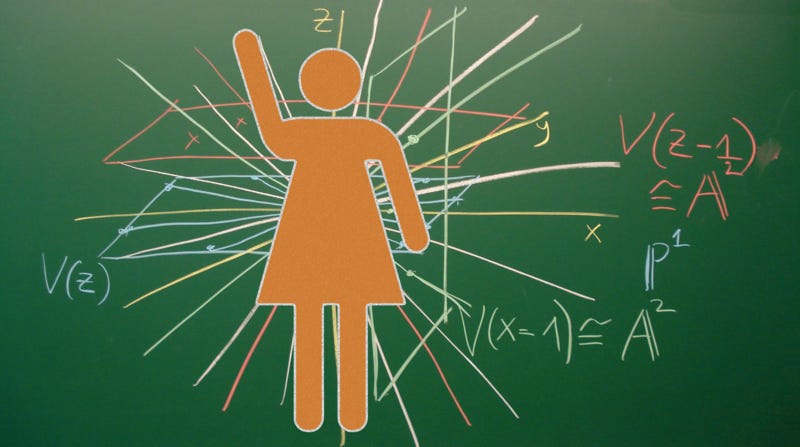Citation?
On October 2nd, 2023, biochemist Katalin Karikó shared the Nobel Prize in Physiology or Medicine with Drew Weissman for work that provided the foundation for rapid mRNA vaccine development.
Karikó was born in Hungary and moved to the US to pursue an academic career, eventually landing at the University of Pennsylvania. There, she was forced out of the tenure track and saw her pay reduced. While dealing with a cancer diagnosis. And a husband stuck in Hungary due to visa issues.
Her story is, sadly, not unique.
The attrition of women in research positions is well-documented and not a thing of the past. Mere months ago, a study found that (emphasis mine):
…women leave academia overall at higher rates than men at every career age, in large part because of strongly gendered attrition at lower-prestige institutions, in non-STEM fields, and among tenured faculty.
Even in ‘safe’ tenured positions, women are more likely than men to leave academia.
It doesn’t help that the scientific publishing machine is inherently sexist. The research of women who stay in science/academia rarely gets the credit it deserves because… men cite men. It is literally a boys’ club1. At every step of the academic route, systemic barriers appear in women’s way. Reference letters for female students tend to include remarks on their personal lives and appearance while focusing less on their skills, female researchers are cited less, and for review papers (which tend to do well citation-wise) papers with a male lead author are less likely to include female co-authors.
As a result, women - who now outnumber men in both overall bachelor and master graduates - are less and less represented with each rung of the academic ladder we climb. Consider the following graph based on EU data (from Boivin et al. 2023):
Toxic tower
Wait. I wrote ‘as a result’ a few sentences ago. Is that true? Women are leaving academia more than men, but is it due to the inherent sexism? After all, perhaps the demands of academia are less compatible with the lives that women - on average - choose. Did you get a chill running down your spine just now? Yeah, me too. But we can’t deny that women in academia who want to start a family will face the expectations of society, and perhaps of their friends, family, and partner that the woman will take a career step back. History is rife with ‘great male scientists’ who had wives who did everything for them so they could pretend to be shining beacons of humanity’s intellectual potential. I’d love to see many more examples of the reverse.
Here’s the kicker, though. While work-life balance obviously matters, it’s not the number one reason female academics leave academia.
No, the main reason women close the door of the ivory tower behind them is… a toxic workplace. When it comes to sexual harassment, academia is second only to the military2. 50% of female staff in universities have to deal with sexual harassment3, as do 20-50% of female students. Those numbers are very likely a significant underestimation. Not all victims speak up. This is not restricted to scientific disciplines, of course. The arts and humanities are not doing better. Anecdotally, almost every woman studying/working in academic philosophy has one or multiple stories about dealing with creepy professors, teaching assistants, or - yes - students. Female instructors, from teaching assistants to tenured professors, receive worse teaching evaluations, which often center on their appearance. I don’t think any male instructor ever got the feedback that he’d look better in a dress or should smile more…
Let that sink in. Don’t skip this step! Let this truly sink in. If you know any woman - student or faculty - in academia, she has more likely than not experienced sexual harassment. I have the (yes, male) privilege of never having had to deal with that and yet I am shaking as I write this.
Despite its (fading) image of intellectualism, academia has a major sexist and harassment problem. Every university and institution claims to have initiatives to force those numbers down, but sadly, those initiatives are not as effective as they should be.
The true problem is that those initiatives are even necessary. In conditions where there is a power imbalance, certain men with a warped worldview feel emboldened enough to take what they are not (and will never be) entitled to.
Those men have to be held accountable. To this day, too many male predatory academics get away with it (and each one is one too many), due to reputation, grant income, and lax policies. Anti-harassment policies and their enforcement should be front and center at every institution, including academia. Put that on your fancy logo with crest and Latin motto, universities.
A white boys’ club at that — the citation imbalance extends to non-white scholars (of all genders).
Beyond the day-to-day interactions, fieldwork and/or conferences are also hotbeds of harassment.
In this report, sexual harassment has three categories: gender harassment (verbal and nonverbal behaviors that convey hostility, objectification, exclusion, or second-class status about members of one gender); unwanted sexual attention (unwelcome verbal or physical sexual advances, which can include assault); and sexual coercion (when favorable professional or educational treatment is conditioned on sexual activity).







“Let that sink in. Don’t skip this step! Let this truly sink in. If you know any woman - student or faculty - in academia, she has more likely than not experienced sexual harassment. I have the (yes, male) privilege of never having had to deal with that and yet I am shaking as I write this.”
One of the very, very few astute things Joe Rogan ever said is that being a woman in an office or campus setting must be like being a man who just arrived in an American prison. You’re stuck in this claustrophobic, confined space all day long with a bunch of dudes who want to fuck you all the time.
It sounds like a nightmare.